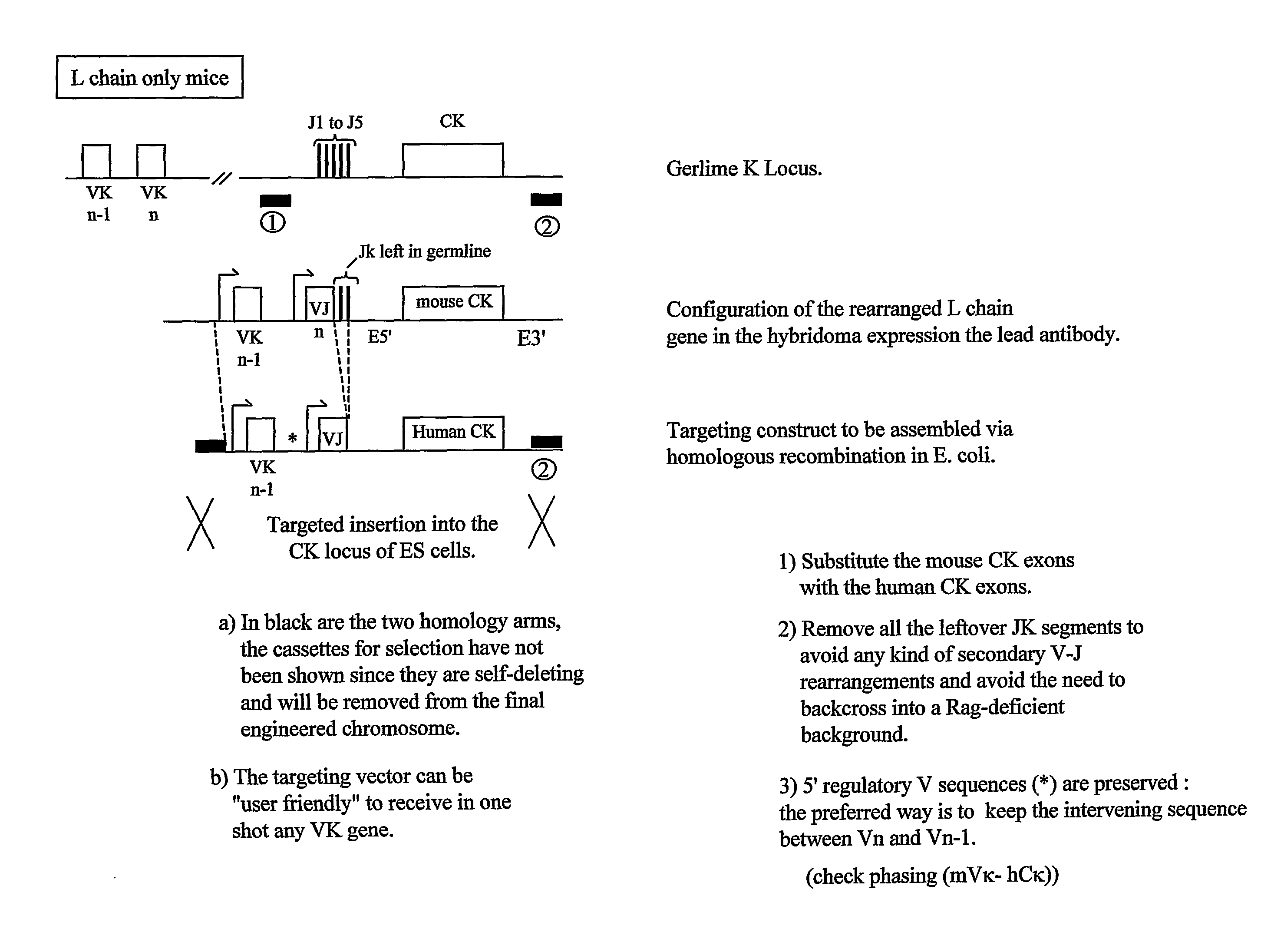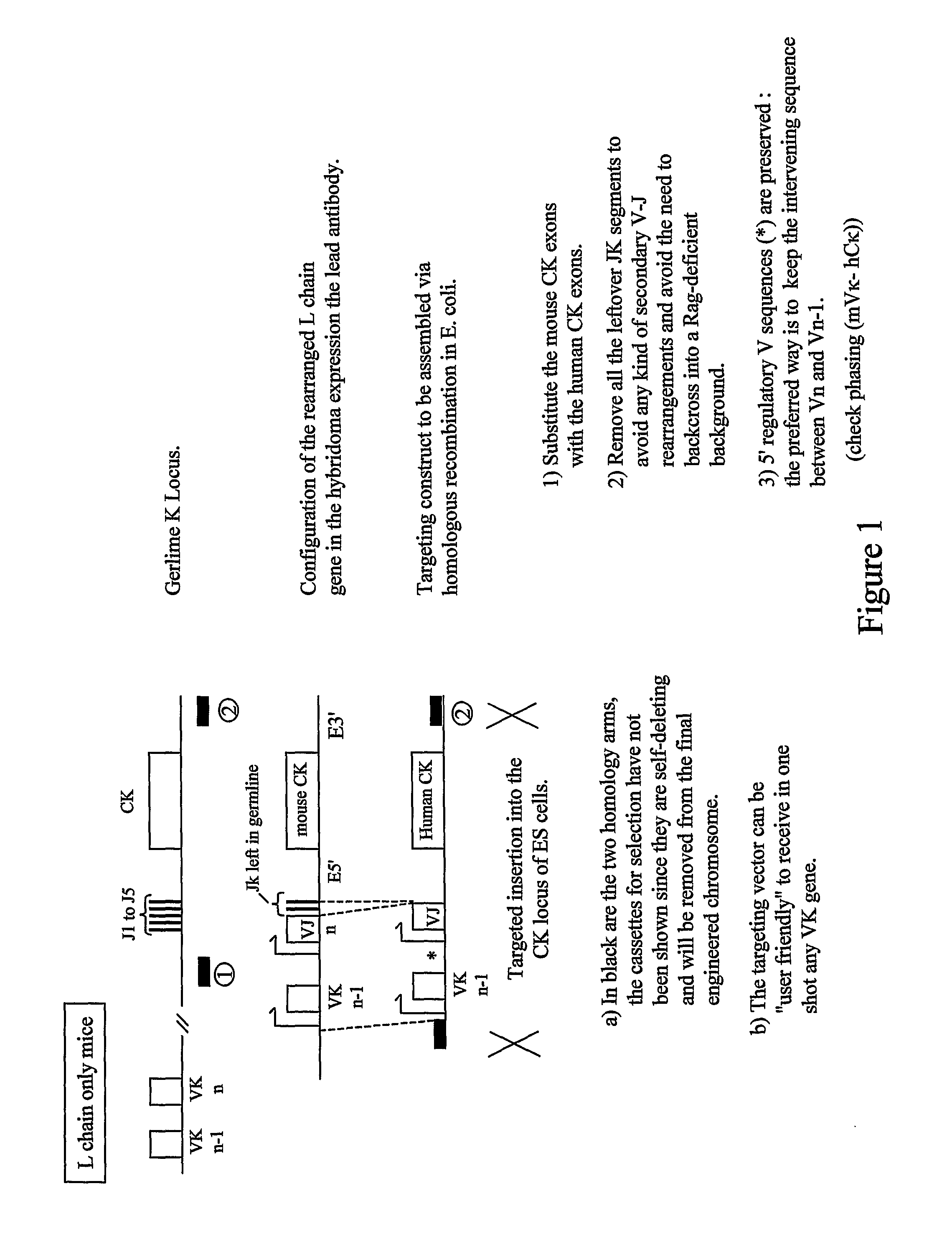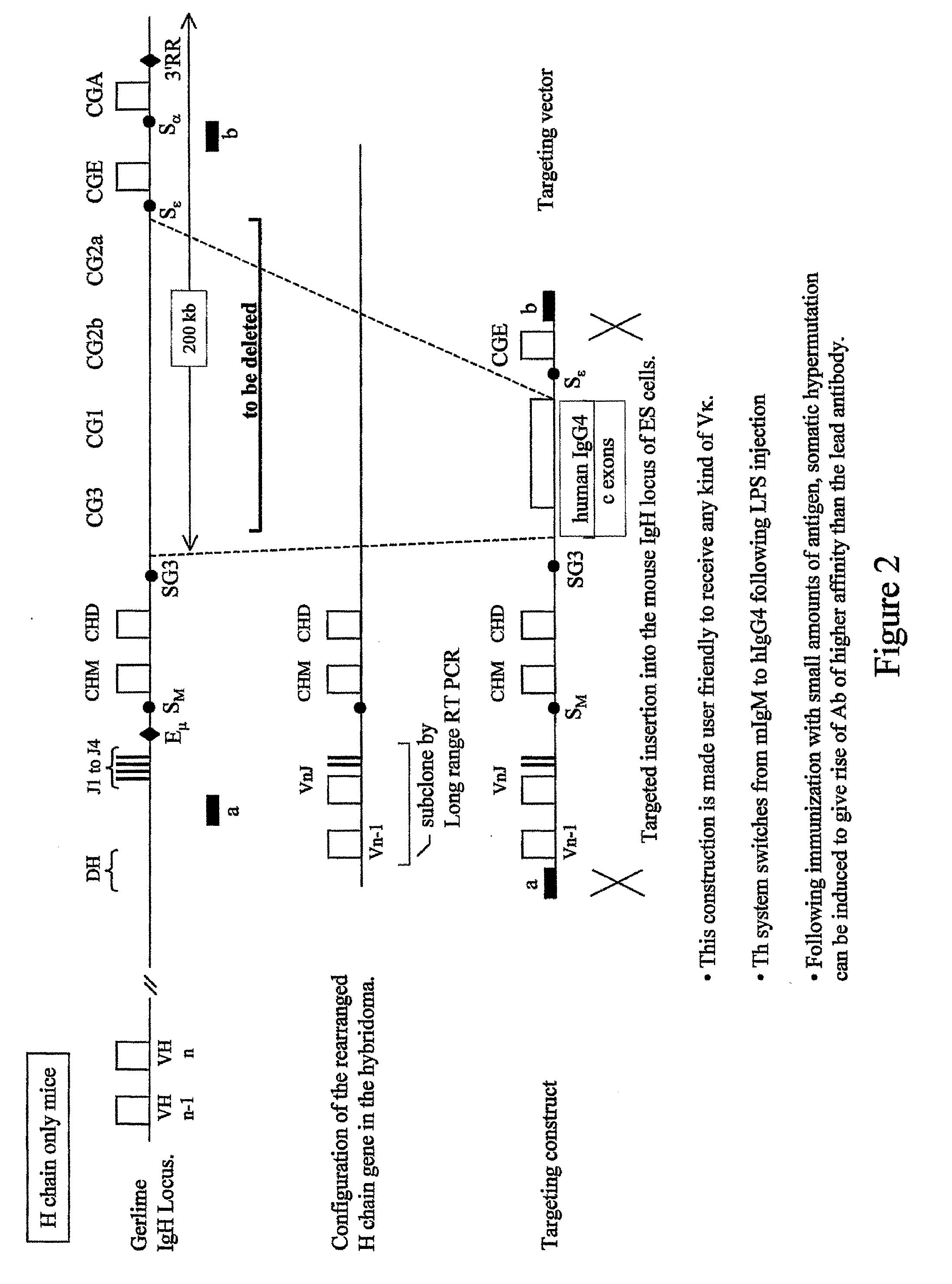Transgenic Animals and Methods of Making Recombinant Antibodies
a technology of recombinant antibodies and transgenic animals, which is applied in the field of transgenic animals and methods of making recombinant antibodies, can solve the problems of affecting the ability of chimeric antibodies to be produced in sufficient quantities, affecting the ability of chimeric antibodies to be humanized and/or chimeric, and hampered, so as to improve the affinity of low-affinity antigens
- Summary
- Abstract
- Description
- Claims
- Application Information
AI Technical Summary
Benefits of technology
Problems solved by technology
Method used
Image
Examples
example 1
Engineering of the Mouse Ig H Locus
[0206]Two mouse BACs denoted RP23-351J19 and RP23-109B20, and corresponding to the mouse IgH locus were selected from a BAC library (Osoegawa K et al. (2000) Genome Res. 10:116-128, the disclosure of which is incorporated herein by reference in its entirety). They show a 76 kb overlap and each covers part of the region containing the diversity (D), and junction (J) gene segments, and the constant (C; IgG3 to IgA) genes (FIG. 5A). The integrity of the sequences harbored by the two BACs was determined using pulsed-field gel electrophoresis.
Fusing BAC RP23-351J19 to BAC RP23-109B20.
[0207]In a first step, the two BACs are fused to generate a recombinant BAC containing the D and J gene segments as well as the C genes. Two strategies are carried out.
Strategy 1.
[0208]First, a puromycin resistance cassette (de la Luna S et al, (1992) Methods Enzymol. 216:376-85, the disclosure of which is incorporated herein by reference) (“Puro”) is introduced into BAC RP...
example 2
Engineering of a Transgenic Animal Expressing an Antibody Linked to a Marker
[0222]A transgenic mouse is generated where one C gene of the IgH locus (preferentially the E or G1 isotype of the C domain, to benefit of the possibility to control their expression using LatY136F inducer T cells via isotype switching) are replaced by a sequence composed of a cDNA coding for a linker-EGFP or linker-tandem Red sequence.
[0223]To prove the feasability of the approach, a construct is made in a first step to test the expression of the antibody expressed as a single open reading fram a Fab-linker-EGFP version of the KT3 mAb (a rat antibody specific for the mouse CD3 epsilon subunit of the TCR complex).
[0224]Accordingly, we have expressed in the X63-AgX653, a cassette containing as a single open reading frame a sequence corresponding to:[0225]a. the leader of the KT3 VH gene,[0226]b. the KT3 VH gene,[0227]c. the KT3 CH1 (IgG2a) sequence,[0228]d. a > linker,[0229]e. a monomeric form of EGFP, a furi...
PUM
| Property | Measurement | Unit |
|---|---|---|
| Volume | aaaaa | aaaaa |
| Volume | aaaaa | aaaaa |
| Volume | aaaaa | aaaaa |
Abstract
Description
Claims
Application Information
 Login to View More
Login to View More - R&D
- Intellectual Property
- Life Sciences
- Materials
- Tech Scout
- Unparalleled Data Quality
- Higher Quality Content
- 60% Fewer Hallucinations
Browse by: Latest US Patents, China's latest patents, Technical Efficacy Thesaurus, Application Domain, Technology Topic, Popular Technical Reports.
© 2025 PatSnap. All rights reserved.Legal|Privacy policy|Modern Slavery Act Transparency Statement|Sitemap|About US| Contact US: help@patsnap.com



